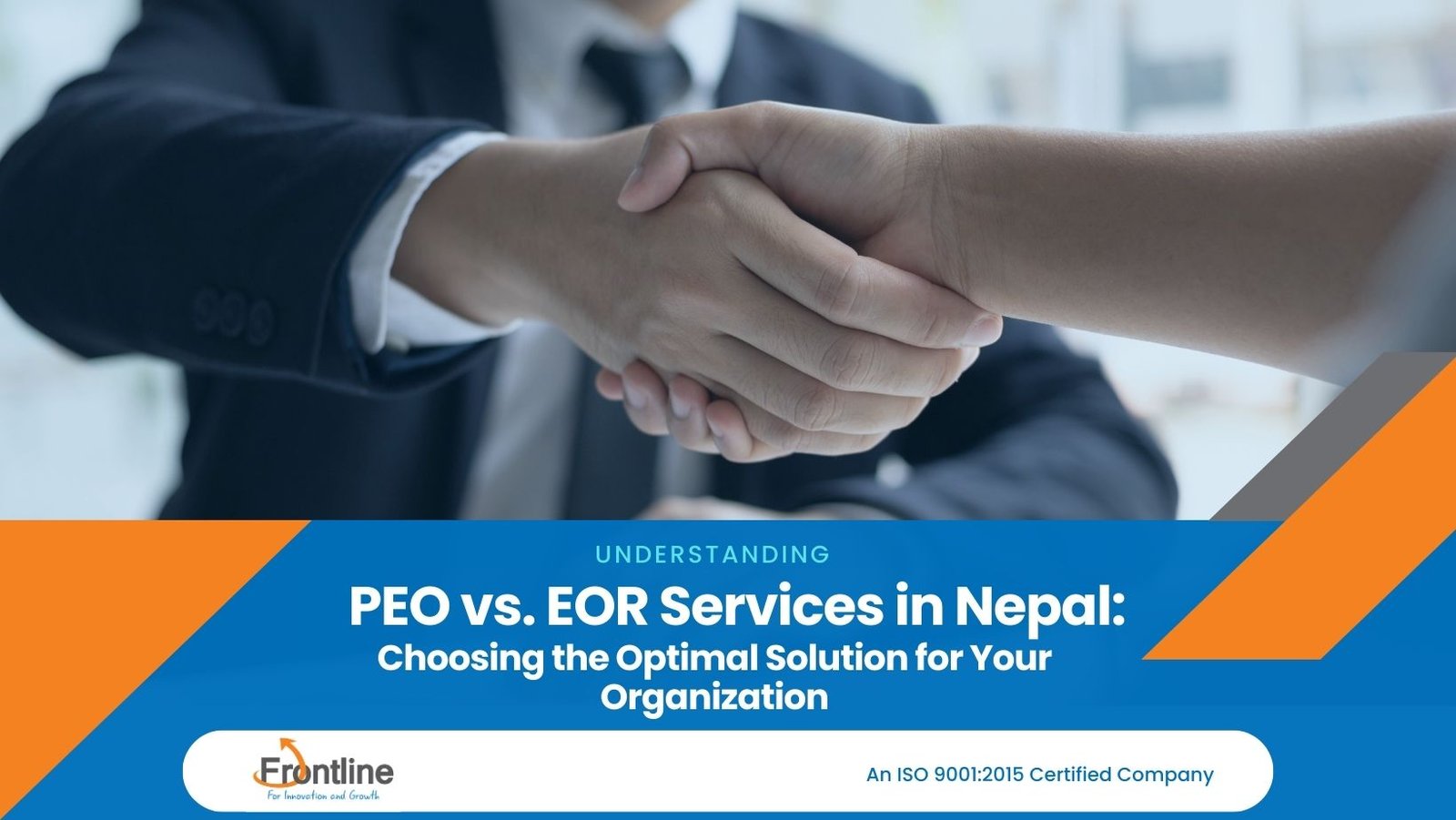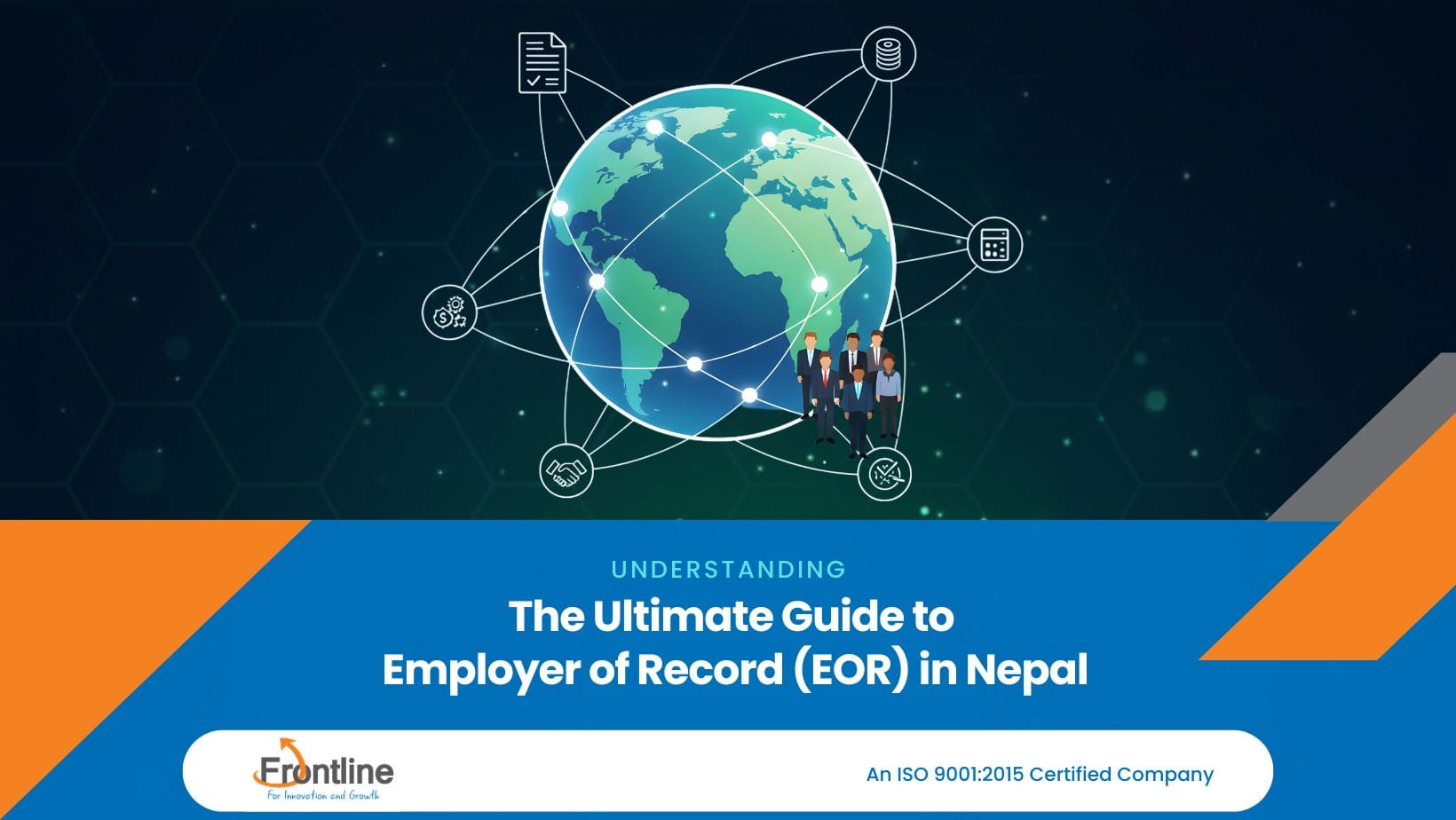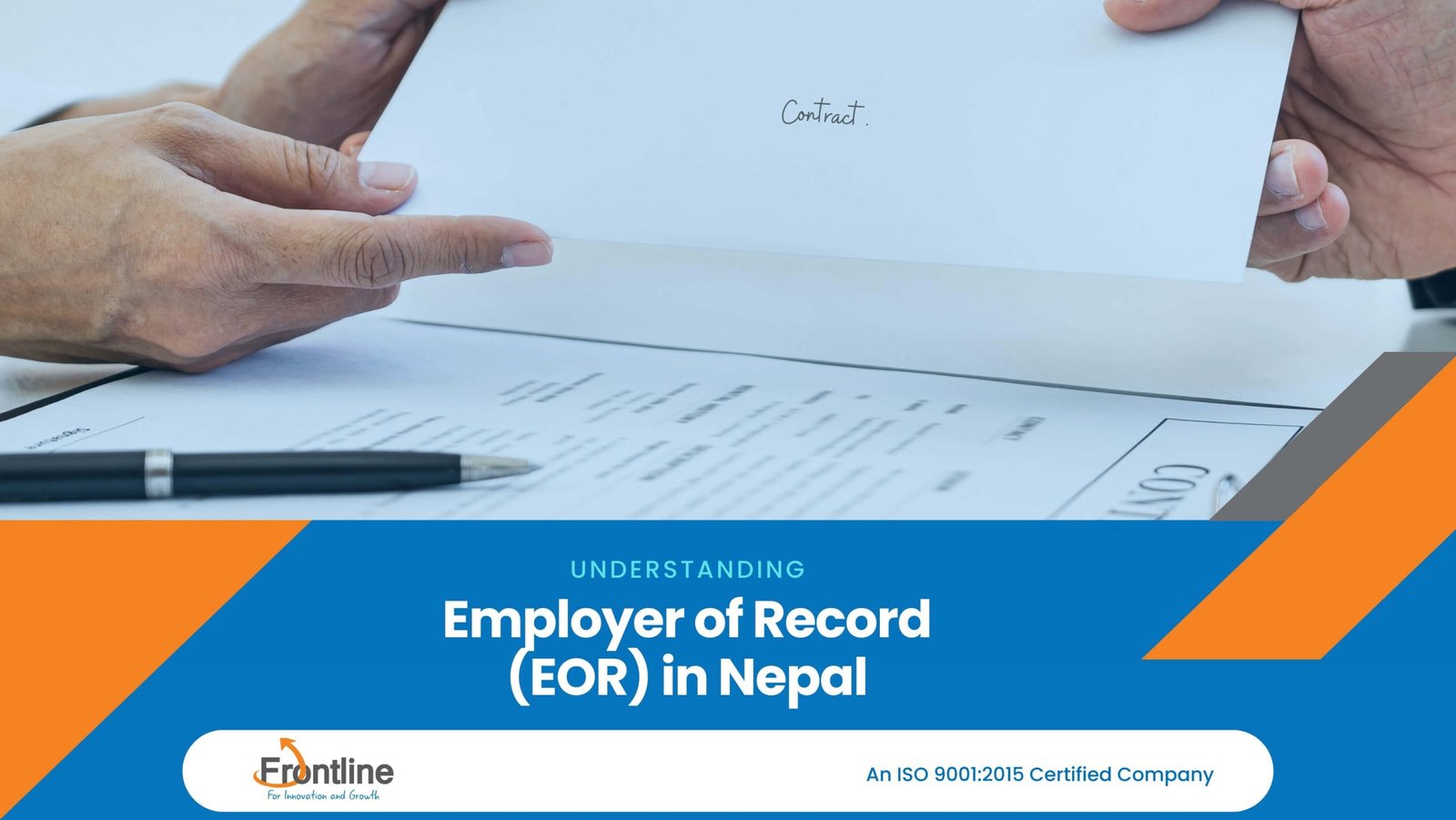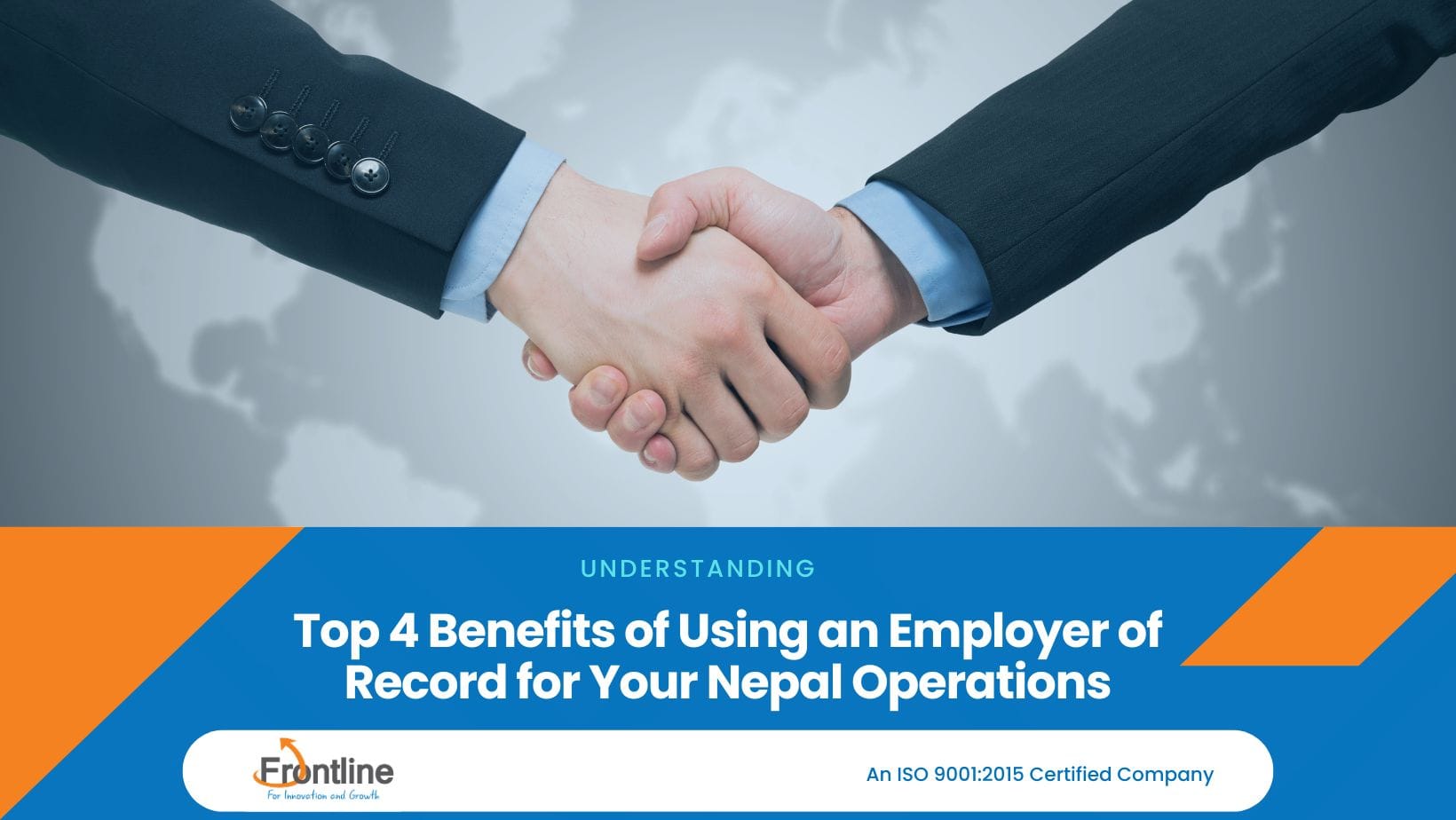PEO and EOR services in Nepal
In the evolving landscape of global business, companies are increasingly exploring efficient methods to manage human resources, particularly when expanding into new markets like Nepal. Two prominent solutions are Professional Employer Organizations (PEOs) and Employers of Record (EORs). Understanding the distinctions between these services is crucial for organizations aiming to optimize their operations and maintain compliance with local regulations.
Understanding PEO and EOR Services
What is a Professional Employer Organization (PEO)?
A Professional Employer Organization (PEO) is a third-party service that enters into a co-employment arrangement with a company. In this setup, the PEO and the client company share employer responsibilities. The PEO typically manages various HR functions, including:
- Payroll Processing: Ensuring employees are paid accurately and on time.
- Benefits Administration: Managing employee benefits such as health insurance and retirement plans.
- Regulatory Compliance: Assisting with adherence to local labor laws and regulations.
- Risk Management: Providing guidance on workplace safety and legal compliance.
It’s important to note that utilizing a PEO requires the client company to have a legal entity in the country of operation, as the PEO does not become the legal employer of the workforce.
What is an Employer of Record (EOR)?
An Employer of Record (EOR) is a service provider that becomes the full legal employer of a company’s workforce in a specific location. The EOR assumes all employment-related responsibilities, including:
- Legal Employment: Serving as the official employer for legal and tax purposes.
- Comprehensive HR Management: Handling payroll, benefits, taxes, and compliance with local labor laws.
- Employee Onboarding and Offboarding: Managing the hiring and termination processes.
This arrangement allows companies to hire employees in a new country without establishing a legal entity, streamlining international expansion efforts.
Key Differences Between PEO and EOR Services
Understanding the differences between PEO and EOR services is essential for making informed decisions:
| Aspect | PEO (Professional Employer Organization) | EOR (Employer of Record) |
|---|
| Legal Employer Status | The client company remains the legal employer, sharing responsibilities with the PEO. | The EOR is the legal employer, assuming full responsibility for employment matters. |
| Entity Requirement | Requires the client to have a legal entity in the country of operation. | No need for the client to establish a legal entity; the EOR’s entity is utilized. |
| Compliance Responsibility | Compliance is a shared responsibility between the client and the PEO. | The EOR assumes full responsibility for compliance with local laws. |
| Scope of Services | Focuses on HR functions such as payroll and benefits. | Offers comprehensive employment services, including legal employment and compliance. |
Advantages of PEO and EOR Services in Nepal
Benefits of Using a PEO in Nepal
- Enhanced HR Functions: PEOs provide robust HR services, allowing companies to focus on core business activities.
- Access to Better Benefits: PEOs can offer superior health and business insurance plans due to their larger pool of employees.
- Cost Savings: Sharing employer responsibilities can reduce administrative costs.
Benefits of Using an EOR in Nepal
- Legal Compliance Assurance: EORs ensure adherence to Nepal’s labor laws, mitigating legal risks.
- No Need for a Local Entity: Companies can hire employees without establishing a legal presence in Nepal.
- Streamlined Expansion: EORs facilitate quick market entry and workforce scaling.
Choosing Between PEO and EOR Services in Nepal
When deciding between PEO and EOR services, consider the following factors:
- Company Size and Resources: Smaller companies or those lacking local expertise may benefit more from EOR services.
- Expansion Strategy: If rapid market entry without establishing a legal entity is desired, an EOR is advantageous.
- Control and Responsibility: Companies seeking to retain more control over HR functions may prefer a PEO arrangement.
🌍 Why Nepal is an Emerging Destination for Global Hiring
Nepal is gaining traction as a strategic hub for remote hiring and global workforce expansion due to several reasons:
- Cost-Effective Talent Pool: Salaries for skilled professionals in Nepal are lower compared to other South Asian markets.
- Growing Tech & Service Sector: The country has seen growth in IT, customer service, accounting, and administrative services.
- English Proficiency: A significant portion of the workforce is fluent in English, making remote collaboration seamless.
- Stable Remote Work Infrastructure: Access to reliable internet and increasing digital literacy supports remote work culture.
Legal & Compliance Landscape for Employment in Nepal
Nepal has a structured labor law framework that governs employment practices. When hiring locally, companies must comply with:
- Labor Act 2017
- Social Security Fund (SSF) regulations
- Provident Fund contributions
- Income tax withholding
- Employee contracts in Nepali and English
Partnering with an EOR or PEO helps navigate these complex regulations efficiently.
🛡️ Risk Management: Why Compliance Matters in Nepal
Failure to comply with Nepal’s labor and tax laws can result in:
- Penalties & Fines: Non-compliance may lead to legal fines from the government.
- Employee Misclassification: Misclassifying employees as independent contractors can cause disputes.
- Reputational Risk: Legal disputes may damage your brand image in a growing market.
An EOR minimizes these risks by becoming the legal employer and taking full responsibility for compliance.
🔍 How to Choose the Right EOR or PEO Partner in Nepal
When evaluating providers, consider:
- Local Expertise: Ensure your partner understands Nepalese labor laws and business culture.
- Technology Platform: Look for modern payroll, HR, and compliance tools.
- Transparent Pricing: Clarify cost structures and avoid hidden fees.
- Client Support: Check for responsiveness and multilingual support.
Conclusion
Selecting between PEO and EOR services in Nepal depends on your organization’s specific needs, resources, and strategic goals. Both options offer unique advantages that can facilitate successful business operations and expansion in Nepal. Careful assessment of each model will enable you to choose the solution that best aligns with your organizational objectives.
285 views






